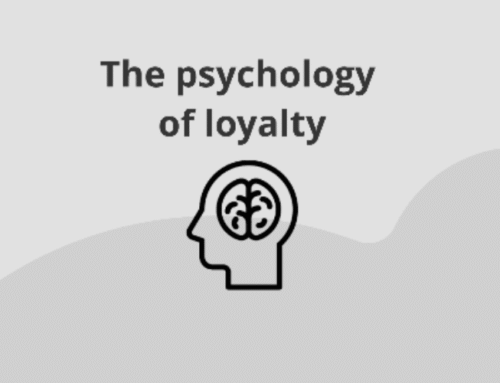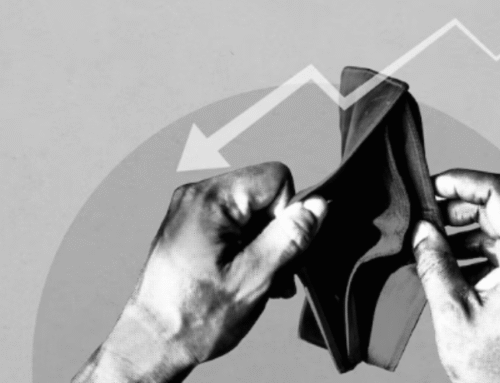What is Loyalty Marketing?
Number crunchers will often tell you that loyalty marketing is about things like increasing “customer lifetime value”, “reducing churn”, and “improving brand retention”. And for the most part, they’re right. These are proven effects of a well-crafted loyalty marketing program. Ones that over the last ten years, it’s become hard to imagine any retailer not focused on executing strategy around.
Yet, if the quid pro quo that the explosion of content marketing has ushered in over the last ten years holds true, using brute force strategy (without respect to an even exchange of value) to implement your new loyalty solution, offers the same diminishing returns as email, text, and social media marketing has.
Consumers now demand deeply personal brand experiences. The less relevant the information they’re served, the less likely they are to engage, not only with a specific piece of messaging but with any of your marketing collateral.
The first step to avoiding this trap is to understand that any effective loyalty marketing strategy starts with the “why” rather than the “what”. So let’s put down the calculators and spreadsheets for a couple of minutes and paint a more humanistic picture of what loyalty marketing is, why it is so profoundly important to the success of your business, and how best to institute it.

The Big Picture
Imagine yourself in a small town. You’ve walked into the local market to grab supplies for a loaf of fresh bread. You know the manager and he knows you. He greets you by name. He knows how old your kids are. He knows, most importantly, that you LOVE to bake.
As you walk up to the counter he informs you that the flour you usually purchase is out of stock this week. He’s ordered a temporary replacement that he thinks you’ll love though and says that he would love your feedback. As a “thanks for understanding”, he gives you a small discount on your order and even shakes your hand as you leave.
Part way through the week you receive a message asking if the replacement flour was good? Did it taste the way you like? If you did like it, he’d be happy to order more. He’s also decided that he’s going to start carrying a larger package size in order to help save you a couple of bucks next time you come in.
All of these interactions (what Google refers to as “micro-moments”) add up to a brand experience – they are deeply personal engagements that take place within the context of your relationship with a customer, which lets them know you care about their satisfaction with your product. They are also at the very core of what loyalty marketing is about – serving the right customer, the right message, at the right time.
Making it Manageable
The world has, of course, become an infinitely bigger place these days and even small retailers can have a hard time keeping track of who has purchased what, and when. Small corner stores grow into national chains that, in turn, become international conglomerates. Technology has brought us closer together, yet made it more difficult for anyone invested in marketing their business to maintain the type of one-on-one spirit of a friendly neighborhood grocer or shopkeeper. Instead of three choices in where to buy their next bag of flour, customers now have thousands. Some are cheaper and oftentimes, more convenient.
As small business owners, marketers, and marketing executives, we constantly struggle with how to re-personalize the consumer experience – how to reach down through the ranks in order to recognize and reward customers who have gone out of their way to shop with us, even though we may never have met them and there may be thousands of miles between us.
Loyalty marketing, at its heart, is about the (re)development of these sorts of genuine consumer relationships – about caring for your customer’s needs – anticipating what they want before they ask for it. The upshot of your investment in that relationship is often a dramatic uptick in quick pick pseudonyms like AOV, CVR’s, CPA’s, and so on…, but understanding the principals that drive these results are often overlooked and can be the difference between a loyalty marketing effort that creates a slight uptick in your business and one that really moves the needle.
What does a great Loyalty Marketing Program Look Like?
The common understanding of loyalty marketing might include various points or awards programs that offer an incentive for making a specified number of purchases at your business. But, like our shop owner, it’s really so much more than that. Isn’t it?
It’s about knowing what each consumer is interested in and making useful and relevant suggestions in relation to that information. It’s about letting customers know when products they’ve expressed interest in are on sale. It’s about post-purchase engagement and following up on your customer’s satisfaction. It’s about doing away with one-size-fits-all marketing campaigns and beginning to engage in dynamically segmented offers and rewards that actually provide value to the customer to which they’re being served.
To get started, many owners, managers, and executives are now turning to any one of a vast array of loyalty platforms that ranges the gamut from consumer-play style digital punch card replacement programs all the way to fully integrated (and very powerful) retail-based CRM’s, which allow businesses to connect with potential shoppers over virtually any channel, in real-time.
Loyalty solutions, like most business software these days, rarely offer a truly “one-size-fits-all” product, though. One of the first decisions you’ll have to make when getting started, is to define your requirements. For example:
- Cost – How much is your loyalty equipment or integration? If the solution offers features like outbound marketing, are they metered?
- Security – Will your customer’s data be secure in your hands? Is your solution PCI / PPI Compliant?
- Ease of Use – Can BOTH you and your employees learn to use the software quickly? Is it cloud-based or hosted on a local server?
Focus on the Customer
When we, as marketers, talk about how to make the best use of programmatic loyalty marketing solutions, and no matter which solution you decide on, one of our biggest challenges over the next ten years is (and should be) the question of how to retain the human experience. The crux of our loyalty strategy, from small corner stores to e-commerce vendors to Fortune 100 businesses, shouldn’t just be a way to increase our bottom line, but to generate the kind of genuine consumer relationships that drive authentic brand evangelism.
The key is to set realistic customer expectations and then not just meet them, but exceed them, preferably in unexpected and helpful ways.
~Richard Branson
When we begin to understand that each customer has a unique journey and leverage technology like bLoyal and other loyalty-based software, in order to tailor our marketing efforts around that unique experience, we amplify the power of loyalty marketing.
If you’re still wondering what is loyalty marketing and how can I implement it at my business, please contact us or demo to see bLoyal, in action.




